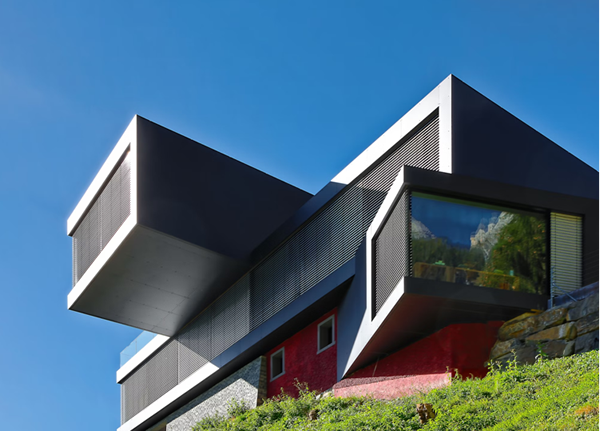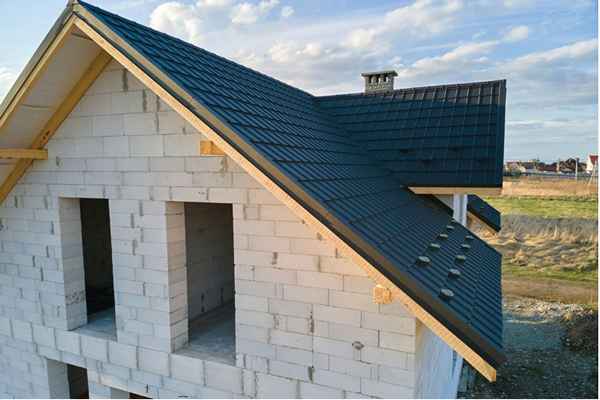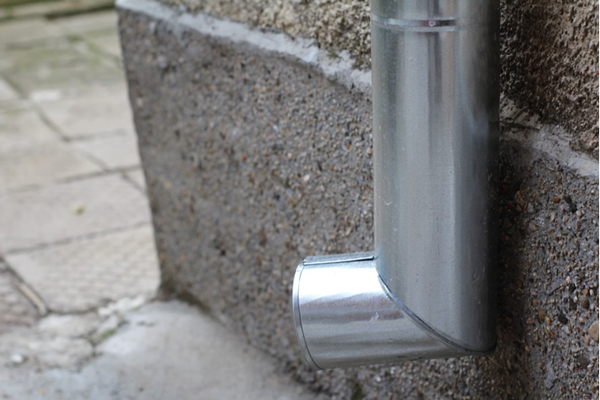Building a new home is one of life’s most significant investments, and while it’s an exciting journey, it can quickly become a financial challenge. One of the best ways to keep your budget in check without compromising on quality or aesthetics is to consider the materials you use carefully. Among the numerous options available, metal is an often-overlooked yet cost-effective choice that can offer substantial savings.
But when should you use metal instead of other materials in your new home?
Let’s dive into how metal can help you save costs while still delivering durability, versatility, and style.

Understanding the Cost Advantages of Metal in Home Construction
Regarding building materials, metal stands out as a highly economical option. The upfront cost of metal can be lower than traditional materials like wood, brick, or concrete, especially when you factor in long-term savings. For instance, metal roofing can cost significantly less over its lifespan than asphalt shingles due to its durability and lower maintenance requirements.
Metal’s cost-effectiveness doesn’t end with roofing. Steel framing, for example, can be more affordable than wood, particularly when considering the strength-to-weight ratio. You need less material to achieve the same structural integrity, reducing material and labor costs. Additionally, metal's prefabrication potential can save on construction time, which translates to lower labor expenses—a critical factor when managing a tight budget.

Why Metal Outlasts Traditional Building Materials
One of the most compelling reasons to choose metal is its unmatched durability. Unlike wood, which can warp, rot, or become infested with termites, metal remains steadfast under harsh conditions. Metal is highly resistant to fire, mold, and pests, which protects your home and saves you from costly repairs down the line.
For example, steel beams can support more weight than wooden ones without the risk of warping over time. This strength and longevity mean that while the initial investment might be on par with or slightly higher than other materials, the reduced need for replacements or repairs makes metal a more economical choice over time.
Consider homes in areas prone to extreme weather. Metal roofing, for example, is often chosen in hurricane-prone regions because it can withstand high winds and flying debris far better than traditional shingles. This resilience reduces the likelihood of damage during storms, offering peace of mind and financial savings through fewer repairs and lower insurance premiums.
How Metal Enhances Aesthetics and Functionality
You might wonder if choosing metal means compromising on style. The answer is a resounding no! Metal’s versatility in design is one of its greatest strengths. Whether you're aiming for a modern, industrial look or a rustic farmhouse style, metal can be molded, colored, and finished to meet your aesthetic goals.
For instance, corrugated metal panels can create a sleek, contemporary exterior, while weathered steel adds a unique, rustic charm to your home. Inside the house, metal can be used in everything from staircases to countertops, offering a chic, modern, functional, and stylish touch.
Moreover, buying a metal roof enhances the look of your home and adds to its functionality. Metal roofs are excellent at reflecting heat, which helps keep your home cool in the summer and can reduce energy costs. This combination of style and practicality makes metal an attractive choice for homeowners who blend aesthetics with savings.

Sustainability and Eco-Friendly Benefits of Using Metal
In today’s eco-conscious world, building a sustainable home is a priority for many. Metal, particularly steel and aluminum, is one of the most recyclable materials. Choosing recycled metal reduces your environmental footprint and can be a cost-effective option.
Metal’s sustainability goes beyond just being recyclable. Its energy efficiency is another significant benefit. Metal roofing, for example, often comes with reflective coatings that reduce heat absorption, leading to lower energy costs for cooling your home. Additionally, metal’s long lifespan means fewer materials are needed for replacements, reducing the environmental impact over time.
Practical Applications: Where and When to Use Metal in Your New Home
Now that you know the benefits, the next question is: where exactly should you use metal in your new home? The answer depends on your specific needs, but here are some of the most cost-effective applications:
Roofing: As mentioned earlier, metal roofing is an excellent choice for its durability, energy efficiency, and long-term savings. It’s particularly beneficial in areas with extreme weather conditions.
Framing: Steel framing is a cost-effective alternative to wood, offering greater strength and resistance to environmental factors like pests and fire.
Cladding: Metal cladding can give your home a modern or industrial look while providing excellent protection against the elements.
Interior Design: Incorporate metal in your home’s interior with staircases, countertops, and fixtures. Metal’s versatility complements various design styles, from contemporary to rustic.
One common misconception about metal is that it feels cold or industrial, but when combined with other materials like wood or stone, it can create a warm, inviting space. Additionally, integrating metal with other building materials can enhance the overall aesthetic while keeping costs in check.
Conclusion
Choosing metal instead of other materials for your new home can lead to significant cost savings without sacrificing quality, durability, or style. Whether you’re looking to reduce construction costs, minimize maintenance, or embrace sustainable building practices, metal offers numerous advantages that make it an intelligent choice. By understanding when and where metal is most effective, you can build a home that is not only beautiful and functional but also aligned with your budget.
As you plan your new home, consider the many benefits metal can bring to your project—it might just be the perfect material to help you achieve your dream home without breaking the bank.
